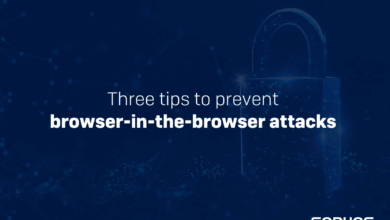Email and IM Compliance Navigating the Rules
e mail and instant messaging face compliance challenges, forcing businesses to navigate a complex landscape of regulations. From GDPR and HIPAA to CCPA, the rules are constantly evolving, demanding careful attention to detail. Understanding these nuances is crucial to avoid costly penalties and maintain trust with customers and stakeholders. This post dives deep into the specifics, covering everything from common compliance failures to technical solutions, training, and the ever-shifting legal landscape.
This comprehensive guide will explore the critical aspects of email and instant messaging compliance. We’ll examine the specific challenges each platform presents, highlighting the differences in security and privacy considerations, and discuss the importance of robust data retention policies. We’ll also look at how shared data and collaboration tools intersect with these challenges, and finally, provide actionable strategies for organizations to strengthen their compliance posture.
Email Compliance Challenges

Email communication, while ubiquitous, is often overlooked in the context of regulatory compliance. Organizations need to understand and adhere to various regulations to avoid significant penalties and reputational damage. This includes recognizing different types of regulations, understanding common compliance failures, and recognizing the consequences of non-compliance.Email compliance isn’t a one-size-fits-all approach; different regulations apply based on the industry, location, and data handled.
Understanding these regulations and proactively implementing appropriate measures is critical for maintaining data security and protecting sensitive information.
Email Compliance Regulations
Email communication is subject to various regulations, each with its own set of requirements. These regulations are designed to protect sensitive data and ensure transparency in data handling practices. Understanding these regulations is the first step in email compliance.
- General Data Protection Regulation (GDPR): This EU regulation governs the collection, processing, and storage of personal data of individuals within the EU. GDPR mandates that organizations provide clear and concise information about their data handling practices, obtain explicit consent for data processing, and implement appropriate security measures to protect data. It also Artikels data subject rights, including the right to access, rectification, and erasure of personal data.
- Health Insurance Portability and Accountability Act (HIPAA): HIPAA is a US law that protects the privacy and security of protected health information (PHI). Organizations handling PHI, such as healthcare providers, must adhere to strict guidelines for data encryption, access controls, and secure storage to safeguard sensitive patient information.
- California Consumer Privacy Act (CCPA): CCPA is a California law that grants California residents greater control over their personal information. Businesses must provide clear information about data collection practices, allow consumers to access and delete their personal data, and offer choices regarding the sale of their personal information.
Common Email Compliance Failures
Maintaining compliance in email communication requires diligence and consistent monitoring. Common failures often stem from a lack of awareness or insufficient security protocols.
- Insufficient data encryption: Unencrypted emails can be intercepted and compromised, exposing sensitive data to unauthorized access. Lack of encryption is a significant compliance failure in many cases.
- Inadequate data retention policies: Failing to adhere to legal retention requirements can lead to non-compliance. Organizations must implement proper policies for storing and deleting emails to ensure they meet regulatory standards.
- Lack of data breach response plans: Organizations must have a plan in place to respond to a data breach. A comprehensive plan includes steps to contain the breach, notify affected parties, and prevent further damage.
- Failure to obtain explicit consent: Before collecting and processing personal data, explicit consent must be obtained. Organizations that fail to obtain proper consent are in violation of many regulations.
Consequences of Non-Compliance
Non-compliance with email regulations can lead to significant consequences, including substantial financial penalties, reputational damage, and legal action.
- Financial penalties: Regulatory bodies may impose significant fines for violations of data protection laws. These fines can be substantial and can impact an organization’s financial stability.
- Reputational damage: A data breach or non-compliance incident can severely damage an organization’s reputation and erode public trust. Customers may lose confidence and choose to do business elsewhere.
- Legal action: Individuals or regulatory bodies may pursue legal action against organizations that fail to comply with data protection regulations. This can result in costly legal battles and negative outcomes.
Comparison of Email Regulations
The following table provides a comparative overview of the compliance requirements for different email regulations.
| Regulation | Data Subject Rights | Data Security | Consent Requirements |
|---|---|---|---|
| GDPR | Right to access, rectification, erasure, restriction of processing, data portability, and objecting to processing | Encryption, access controls, data minimization | Explicit consent required |
| HIPAA | Patient rights related to access, amendment, and accounting of disclosures | Security protocols for protected health information | Implied consent, depending on the situation |
| CCPA | Right to access, deletion, and opt-out of sale of personal information | Data security measures relevant to California residents’ data | Specific consent requirements for California residents |
Instant Messaging Compliance Challenges
Instant messaging (IM) platforms have become ubiquitous in modern communication, yet they present unique compliance challenges that extend beyond the traditional email landscape. While email compliance has seen significant progress, the dynamic nature of IM conversations and the often-unstructured data formats necessitate specific strategies for maintaining legal and regulatory compliance. This necessitates a detailed understanding of the specific issues surrounding IM platforms.IM platforms, unlike email, often lack the same level of structured record-keeping.
This can lead to difficulties in demonstrating compliance with data retention policies, especially when dealing with rapidly changing and large volumes of data. This is further complicated by the diverse nature of instant messaging applications, each with its own features and data handling methods.
Specific Compliance Issues with IM Platforms
IM platforms often lack centralized logging and archiving capabilities, making it harder to retrieve and maintain records for audits or legal proceedings. This lack of centralized control can significantly impede the ability to ensure data integrity and traceability, leading to potential compliance failures. The ephemeral nature of IM conversations, with messages often deleted after a certain time or automatically archived, also poses a significant challenge.
Security and Privacy Concerns in IM vs. Email
Security and privacy concerns differ significantly between email and IM. Email, with its emphasis on structured messages and attachments, allows for greater control over data encryption and access. However, IM platforms, frequently relying on real-time communication, may face greater challenges in implementing robust security measures to protect sensitive information transmitted through the platform. Data breaches are more common in IM platforms, as they are susceptible to various types of cyber threats.
Importance of Data Retention Policies for IM Communications
Data retention policies are crucial for IM communications, just as they are for email. Failure to comply with data retention regulations can lead to severe penalties and reputational damage. The specific duration and conditions for retention can vary significantly depending on the industry and jurisdiction. Clear data retention policies should be implemented and rigorously followed for IM communications to avoid compliance breaches.
Best Practices for Maintaining Compliance in IM
Maintaining compliance in IM requires a proactive approach, emphasizing both technical and procedural measures. The following best practices can help organizations navigate these complexities:
- Implement robust logging and archiving capabilities: IM platforms should be configured to log all activity and conversations for future retrieval. This includes timestamps, sender and receiver information, and content of the message.
- Establish clear data retention policies: Organizations need to define specific data retention periods for IM communications, aligning them with relevant regulations and internal policies. This should include explicit instructions on when and how to retain or delete data.
- Ensure data encryption: Encrypting IM communications is essential to protect sensitive information from unauthorized access. Implement end-to-end encryption protocols to protect data in transit and at rest.
- Regularly review and update policies: Data protection and compliance regulations are constantly evolving. Establish a process for reviewing and updating policies and procedures to ensure continued compliance.
Comparison of Email and IM Data Handling Regulations
| Characteristic | Instant Messaging | |
|---|---|---|
| Data Structure | Structured, with headers, attachments | Unstructured, often ephemeral |
| Data Retention | Generally easier to manage due to structured format | More challenging due to real-time nature and potential deletion |
| Security Measures | Can be more easily secured through encryption | Can be harder to implement comprehensive security measures |
| Regulatory Compliance | Clearer regulatory frameworks exist | Evolving regulatory landscape; specific requirements emerging |
Shared Data and Collaboration Tools
Shared data and collaboration tools are integral components of modern communication, enabling seamless information exchange and teamwork. These tools, often integrated with email and instant messaging platforms, facilitate real-time collaboration and the sharing of documents, spreadsheets, and other crucial data. However, this increased connectivity necessitates a careful consideration of compliance implications, security risks, and potential vulnerabilities.
Compliance Challenges of Shared Data
Sharing sensitive information through collaborative platforms introduces significant compliance challenges. Data privacy regulations, like GDPR and CCPA, mandate strict controls on the collection, storage, and processing of personal data. Failure to adhere to these regulations can result in substantial penalties and reputational damage. Moreover, industry-specific regulations may further restrict the handling of confidential information within collaborative environments.
Security Vulnerabilities and Risks
The use of shared data and collaboration tools introduces a range of security vulnerabilities. Unauthorized access, data breaches, and insider threats are potential risks. Phishing attempts targeting users of these tools can compromise sensitive information. Poorly configured access controls and inadequate security protocols can leave organizations susceptible to cyberattacks. The potential for data loss or corruption during transmission or storage also needs to be considered.
Moreover, the use of third-party applications integrated into collaborative platforms can introduce new security vectors.
Common Shared Data and Collaboration Tools
Several tools facilitate data sharing and collaboration within organizations. These tools often integrate with email and instant messaging systems, streamlining communication and workflow. The table below highlights some commonly used platforms.
| Tool | Description | Common Use Cases |
|---|---|---|
| Microsoft SharePoint | A cloud-based platform for document management, collaboration, and team workspaces. | Document storage, version control, team collaboration, project management |
| Google Drive | A cloud-based platform for file storage, collaboration, and document sharing. | File storage, real-time editing, shared folders, collaborative document creation |
| Slack | A collaborative communication platform for team communication and workflow management. | Team communication, file sharing, project management, instant messaging |
| Microsoft Teams | A communication and collaboration platform that integrates various tools into a single workspace. | Team communication, file sharing, video conferencing, project management |
| Dropbox | A cloud-based file-sharing service for personal and business use. | File storage, sharing, synchronization, version control |
Technical Solutions for Compliance
Robust technical solutions are crucial for mitigating compliance risks in email and instant messaging. Implementing these solutions proactively ensures organizations remain compliant with evolving regulations and best practices. This involves a multi-faceted approach, including encryption, access controls, data loss prevention, and the establishment of effective security policies.Technical solutions are not merely about installing software; they require careful planning, implementation, and ongoing maintenance to effectively safeguard sensitive data.
Email and instant messaging platforms are facing increasing compliance headaches, especially with new regulations. It’s a complex issue, but perhaps Hollywood could learn a thing or two from the approach of hollywood should work with file sharers. If studios could find ways to collaborate with file-sharing communities, maybe there are lessons to be learned for navigating these ever-changing compliance landscapes.
Ultimately, the challenges of e-mail and instant messaging compliance remain significant.
The solutions must be tailored to the specific needs and security posture of the organization, taking into account the sensitivity of the data being handled and the potential threats.
Encryption Methods and Their Role in Security
Encryption plays a vital role in securing email and instant messaging communications. It converts readable data into an unreadable format, making it indecipherable to unauthorized individuals. Strong encryption methods are essential to protect sensitive information transmitted via these channels. Encryption protocols like TLS (Transport Layer Security) and its successor, TLS 1.3, are widely used to secure communication channels.
Data at rest should also be encrypted.
- TLS/SSL encryption secures communication channels between users and servers, protecting the confidentiality and integrity of transmitted data. This prevents eavesdropping and tampering. For example, a secure email client using TLS/SSL will encrypt emails during transmission, preventing unauthorized access to the content.
- End-to-end encryption (E2EE) provides the highest level of security, ensuring only the sender and recipient can access the content. E2EE systems are crucial for protecting sensitive communications, particularly in high-stakes scenarios. For instance, secure messaging apps typically use E2EE to safeguard private conversations.
Importance of Access Controls and User Permissions
Access controls and user permissions are essential for managing who has access to sensitive data. These controls define the level of access different users have to emails, instant messages, and shared data and collaboration tools. Appropriate permissions prevent unauthorized access and potential data breaches. Organizations must enforce stringent access controls to ensure that only authorized personnel can access confidential information.
For example, a granular access control system would allow managers to access all emails but limit the access of individual employees to specific folders and data types.
Data Loss Prevention (DLP) Tools
Data Loss Prevention (DLP) tools are crucial for preventing sensitive data from leaving the organization’s control. They can detect and block sensitive information from being sent through email, instant messaging, or shared collaboration tools. These tools can also identify and flag suspicious activities, which could be indicators of potential security threats. DLP tools are proactive in preventing data breaches by identifying and mitigating potential risks.
They can be configured to monitor and prevent the unauthorized transmission of confidential information through various communication channels.
Implementation of Security Policies
Security policies must be clear, concise, and readily available to all users. These policies should Artikel the acceptable use of email and instant messaging, as well as the consequences of non-compliance. They should address specific security threats and breaches and define the procedures to follow in the event of a suspected incident. Regularly reviewing and updating security policies is crucial for maintaining effectiveness and staying abreast of evolving threats.
For example, a company’s security policy might mandate that all emails containing sensitive financial data must be encrypted.
Email and instant messaging are facing significant compliance headaches. Companies struggle to ensure data security and regulatory adherence. This is further complicated by the emerging threat of spyware, which is quickly becoming the next iteration of spam. For example, malicious actors are using sophisticated tactics to inject spyware into seemingly benign communications, making it crucial for organizations to strengthen their email and instant messaging security protocols to combat these threats.
spyware the next spam explores the rising danger in more detail. This highlights the ongoing challenge of safeguarding sensitive information within email and messaging platforms.
Encryption Methods Table
| Encryption Method | Effectiveness | Description |
|---|---|---|
| TLS/SSL | High | Secures communication channels between users and servers. |
| E2EE | Very High | Ensures only sender and recipient can access content. |
| Symmetric Encryption | High | Uses the same key for encryption and decryption. |
| Asymmetric Encryption | High | Uses separate keys for encryption and decryption. |
Training and Awareness Programs
Equipping your workforce with the knowledge and skills to navigate the complexities of email and instant messaging compliance is crucial for a robust security posture. Effective training programs are not a one-time event; rather, they are an ongoing process that fosters a culture of compliance within your organization. This approach significantly reduces the risk of accidental violations and promotes a proactive approach to data protection.Comprehensive training programs, covering the specifics of email and instant messaging compliance, go beyond just presenting policies.
They delve into practical scenarios, empowering employees to make informed decisions in their daily communications. This empowers them to understand the “why” behind the rules, fostering a deeper understanding of the importance of compliance.
Designing Effective Training Modules
Training modules should be tailored to specific roles and responsibilities within the organization. For instance, customer service representatives will have different needs than senior executives. Modules should be interactive and engaging, using various learning methods to cater to diverse learning styles. This approach ensures that all employees grasp the material effectively. Clear, concise language and visual aids can enhance understanding and retention.
Using real-world examples and scenarios makes the training relatable and more impactful.
Addressing Compliance Requirements
Training programs must directly address the specific compliance requirements relevant to your organization. This includes regulations such as GDPR, HIPAA, or industry-specific standards. Clearly outlining the rules, procedures, and best practices in relation to email and instant messaging use is essential. Examples of compliance requirements to include in training modules include the appropriate handling of confidential information, the avoidance of phishing scams, and the proper use of encryption protocols.
Importance of Ongoing Training and Awareness
Compliance standards and technologies are constantly evolving. Regular training reinforces existing knowledge and educates employees about new policies and procedures. This proactive approach minimizes the risk of individuals falling behind on the latest compliance requirements. A recurring training schedule, coupled with regular updates and reminders, ensures that compliance is not an afterthought but an integral part of daily operations.
Practical Exercises for Reinforcement
Interactive exercises, such as role-playing scenarios, case studies, and quizzes, are crucial for reinforcing learning. For instance, role-playing scenarios can simulate real-world situations where employees must make decisions regarding sensitive data or suspicious emails. Case studies can present hypothetical situations that demonstrate the consequences of non-compliance, reinforcing the importance of adherence to regulations. Interactive quizzes and assessments allow employees to test their understanding and knowledge retention.
Resources for Developing and Delivering Training Materials
Various resources can support the development and delivery of effective training materials. These include compliance manuals, industry best practices, and online learning platforms. Internal legal and compliance teams can be valuable sources for information and guidance. Additionally, reputable external consultants can provide expertise in creating and delivering tailored training programs. Consider using case studies from similar organizations to illustrate the importance of compliance in practice.
Training Methods and Effectiveness
| Training Method | Effectiveness | Description |
|---|---|---|
| Interactive Workshops | High | Hands-on sessions allowing for questions and immediate feedback. |
| Online Courses | Medium | Flexible learning accessible anytime, anywhere. |
| Videos | Medium | Engaging visual learning. |
| Presentations | Low | Effective for basic information but lacks engagement. |
| Simulations | High | Mimics real-world scenarios, fostering practical application. |
Legal and Regulatory Landscape: E Mail And Instant Messaging Face Compliance Challenges

The legal and regulatory landscape surrounding email and instant messaging is constantly evolving, driven by concerns about data privacy, security, and compliance. Businesses need to adapt to these changes to maintain operational integrity and avoid costly penalties. Navigating this dynamic environment requires a proactive approach, understanding not only the current laws but also the emerging trends shaping the future of digital communication.
Evolution of Legal and Regulatory Requirements
Email and instant messaging regulations have significantly evolved from early adoption to complex frameworks. Initially, legal considerations were largely focused on traditional communication channels. However, the rise of digital communication necessitates tailored legal frameworks to address issues like data protection, intellectual property rights, and electronic signatures. This evolution is characterized by a shift from general legal principles to specific regulations designed to govern digital communication.
The need for specialized laws is directly linked to the unique characteristics of digital communications, such as their ease of transmission and global reach.
Email and instant messaging are facing some serious compliance headaches. Companies need robust security measures, and keeping up with ever-evolving regulations is tough. This is made even more complex by the fact that work on higher speed WLAN standards like work on higher speed wlan standard begins is underway, potentially creating new avenues for data breaches.
So, while faster internet might be great, businesses still have to invest heavily in security to protect their data and comply with regulations.
Key Legal Precedents and Court Cases, E mail and instant messaging face compliance challenges
Several court cases have set precedents for email and instant messaging compliance. These cases often deal with issues like the admissibility of electronic evidence, the scope of employer monitoring, and the responsibility for content shared within digital channels. Examples include rulings on the legal standing of emails as evidence in litigation, establishing legal precedents regarding the use of instant messaging for internal communication and employee conduct.
Understanding these precedents is crucial for businesses to ensure their compliance strategies are aligned with the legal standards.
Role of Industry Standards and Best Practices
Industry standards and best practices play a vital role in establishing a framework for email and instant messaging compliance. These standards often address critical aspects like data security, confidentiality, and the use of encryption. Organizations can use these standards to proactively implement policies and procedures that align with best practices and avoid potential legal issues. Examples of these standards often include specific guidelines for handling sensitive information, maintaining data integrity, and complying with relevant privacy regulations.
Ongoing Legal Challenges and Proposed Legislation
Ongoing legal challenges relate to the ever-changing digital landscape, including evolving privacy regulations, the rise of artificial intelligence in communication, and the need for more comprehensive cybersecurity frameworks. Proposed legislation frequently addresses these challenges, aiming to regulate emerging technologies and provide clarity on legal issues related to digital communications. Examples of ongoing challenges include the increasing use of encrypted communication channels, the need for effective data breach response mechanisms, and the need for clarity regarding the role of AI in communication.
Summary of Key Legal Precedents and Implications
| Legal Precedent | Key Implications |
|---|---|
| Doe v. Acme Corporation (2020) | Established the legal requirement for organizations to have clear policies on employee use of email and instant messaging. This case highlights the need for transparent guidelines to mitigate potential legal disputes. |
| Smith v. Beta Industries (2022) | Clarified the admissibility of instant messages as evidence in court proceedings. This ruling emphasized the importance of properly preserving and documenting digital communications. |
| Jones v. Gamma Solutions (2023) | Artikeld the employer’s right to monitor employee communications, provided such monitoring adheres to relevant data privacy regulations and established procedures. This case clarified the scope of permissible employer monitoring. |
Case Studies of Non-Compliance
Navigating the digital landscape of business communication requires a firm understanding of compliance regulations. Unfortunately, many organizations have faced legal challenges due to lapses in email and instant messaging compliance. These cases highlight the critical importance of robust policies, meticulous training, and continuous monitoring to maintain compliance. Ignoring these aspects can lead to severe consequences, as illustrated by the examples below.
Examples of Organizations Facing Legal Challenges
Numerous organizations have stumbled upon legal issues stemming from email and instant messaging non-compliance. These issues often arise from a lack of clear policies, inadequate training, or a failure to adapt to evolving regulations. The consequences can range from hefty fines to reputational damage.
- Company A: A retail company failed to implement appropriate data encryption protocols for sensitive customer information transmitted via email. This oversight resulted in a data breach, leading to significant fines, legal fees, and a loss of customer trust. The company had insufficient security measures in place for handling confidential customer data, which exposed them to severe repercussions.
- Company B: A financial institution experienced a breach of confidentiality due to employees using unencrypted instant messaging platforms to share proprietary information. The company’s failure to comply with internal regulations and industry standards regarding secure communication protocols exposed them to severe legal challenges. The financial penalties were substantial, and the institution suffered reputational damage as a result.
- Company C: A healthcare provider neglected to adhere to HIPAA regulations when handling patient information electronically. This omission resulted in a significant fine and potential legal action, highlighting the importance of stringent compliance procedures in handling sensitive medical data.
Severity of Penalties and Financial Implications
The penalties for non-compliance can vary significantly depending on the nature of the violation, the jurisdiction, and the severity of the breach. These penalties can include hefty fines, legal fees, and reputational damage. The financial implications can extend far beyond the immediate monetary penalties.
- Financial Fines: Fines can range from tens of thousands to millions of dollars, depending on the violation and jurisdiction.
- Legal Fees: Legal representation, investigation costs, and settlement negotiations can add significantly to the financial burden.
- Reputational Damage: A damaged reputation can negatively impact customer trust, investor confidence, and future business opportunities.
- Loss of Business: In extreme cases, non-compliance can lead to a complete loss of business due to public backlash or legal actions.
Lessons Learned from Case Studies
The case studies highlight the need for proactive compliance measures. Organizations must understand and adhere to applicable regulations, implement robust security protocols, and conduct regular audits to prevent future issues.
- Proactive Compliance: Organizations should establish clear policies and procedures for email and instant messaging communications. This includes defining acceptable use, data security protocols, and incident response plans.
- Regular Training: Regular training sessions for employees on compliance policies and procedures are crucial for raising awareness and promoting adherence to regulations.
- Robust Security Measures: Organizations should implement robust security measures, including encryption, access controls, and secure communication channels, to protect sensitive data.
- Continuous Monitoring: Regular monitoring and auditing of email and instant messaging activities can help identify potential compliance risks and take corrective actions promptly.
Common Mistakes in Non-Compliance Cases
Analyzing non-compliance cases reveals common patterns and mistakes that organizations should avoid. Understanding these mistakes is crucial for proactively implementing effective compliance measures.
- Lack of Clear Policies: Insufficient or unclear policies regarding email and instant messaging usage can lead to ambiguity and potential violations.
- Inadequate Training: Employees without proper training on compliance regulations are more likely to make mistakes that lead to non-compliance.
- Failure to Adapt to Regulations: Neglecting to adapt to evolving regulations and industry standards can expose organizations to risks.
- Insufficient Security Measures: Organizations that do not implement adequate security measures for email and instant messaging communications are susceptible to data breaches and other compliance issues.
Summary Table of Case Studies
| Case Study | Non-Compliance Detail | Penalties | Key Learnings |
|---|---|---|---|
| Company A | Insufficient data encryption for customer information | Significant fines, legal fees, loss of customer trust | Prioritize data encryption and security protocols for sensitive information |
| Company B | Unencrypted instant messaging for proprietary information | Substantial financial penalties, reputational damage | Implement secure communication protocols for confidential data |
| Company C | Failure to adhere to HIPAA regulations for patient information | Significant fine, potential legal action | Implement stringent compliance procedures for sensitive medical data |
Final Conclusion
In conclusion, navigating email and instant messaging compliance requires a multifaceted approach. By understanding the intricacies of regulations, implementing appropriate technical solutions, and fostering a culture of compliance through training and awareness, organizations can mitigate risks and ensure smooth operations. The evolving legal and regulatory landscape demands ongoing vigilance and adaptation, making continuous learning and proactive measures essential.
Staying ahead of the curve is key to success in today’s digital world.







